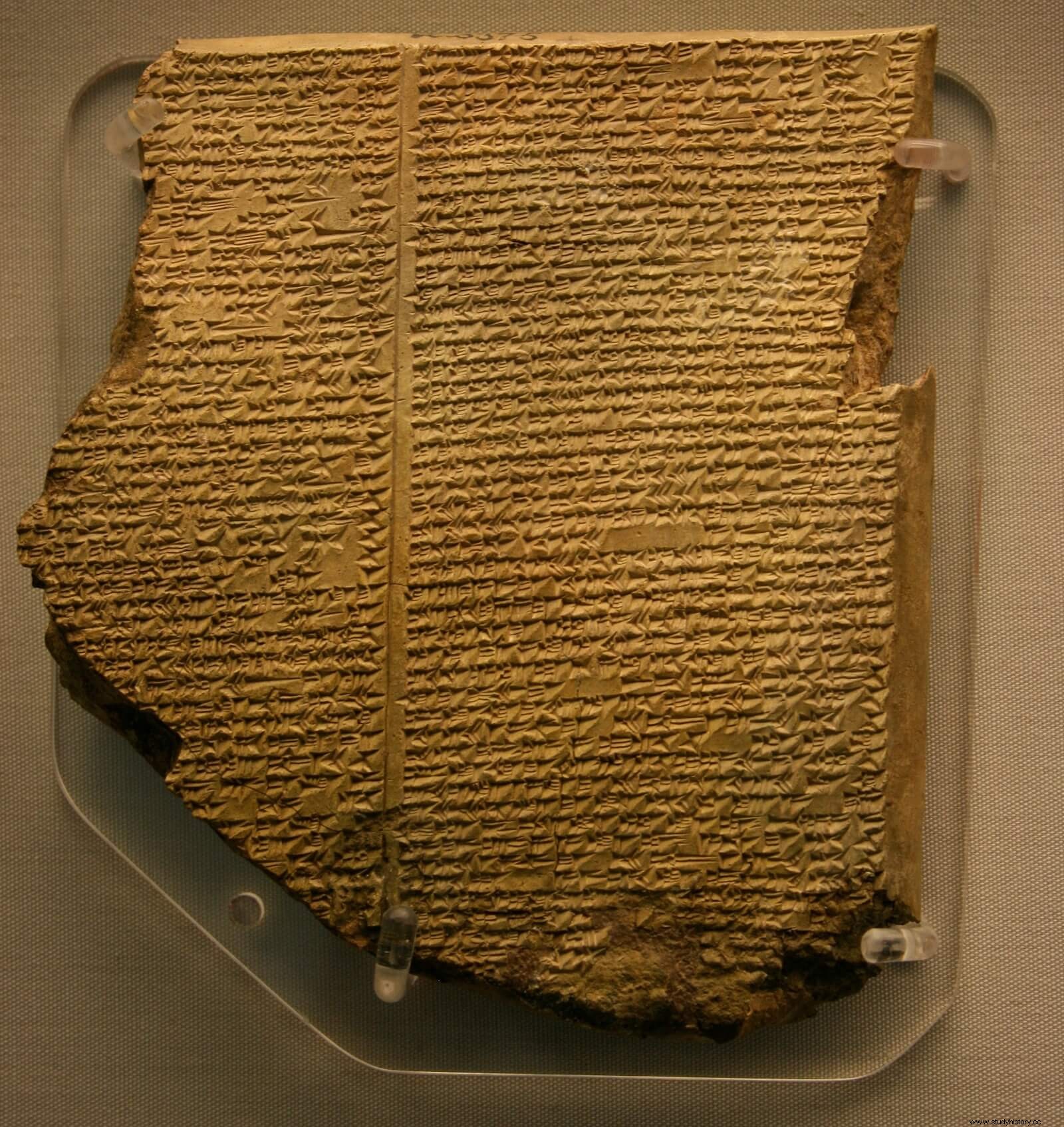
The Epic of Gilgamesh it is undoubtedly one of the most important writings in the history of mankind, the first truly complex and of considerable length. But it is also, above all, the first great story we know. Surely before the brave Sumerian king, there were many other heroes who performed great feats, real or fictitious, undoubtedly exaggerated and often seasoned with a good dose of imagination and enthusiasm, because it is quite true that human beings need models of inspiration in those who see their own achievements and failures reflected, but these, unfortunately, have been forgotten with the inexorable passage of time. The Epic It has led hundreds of researchers upside down for many decades, and today it continues to give a lot to talk about. As we know it today, it is an incomplete work; a puzzle that is missing pieces because we have lost them, although we do not give up tirelessly searching for them. In spite of everything, there are only a few complementary details that make up the gaps in certain parts of the story, and when studying it carefully it is easy to reach the conclusion that its message, its most primary intention, is perfectly outlined, and it is then when the true dimension of an epic story shines, a transcendental journey that places the reader in the role of the protagonist; someone who, through his experience, teaches us how far we can go as human beings and where our limits are, our greatest fears and our most longed for desires.
Back in the 22nd century BC. C., when the first recited poems or songs of the feats of Gilgamesh circulated, still in its primitive stage, Mesopotamia it was a conglomeration of thriving city-states that alternated in the domain of the territory. Broadly speaking and diachronically, in Mesopotamia prior to the arrival of the Persians, Sumerian settlements stood out in the south, Akkadian (Babylonian) in the center (see Archeology and History #10:Babylon and the Hanging Gardens ) and Assyrians in the north. It is well known that one of the cradles of civilization has its origin in the articulation of the settlement and society of the Sumerians, who settled in the Mesopotamian territory in the fourth millennium BC. C. Around the middle of the next millennium, they were already using writing and arranging their texts and records in libraries. For their part, the Akkadians conquered Sumer around 2300 BC. C. and created a great empire, while adopting a good part of the traditions of the first, including writing.
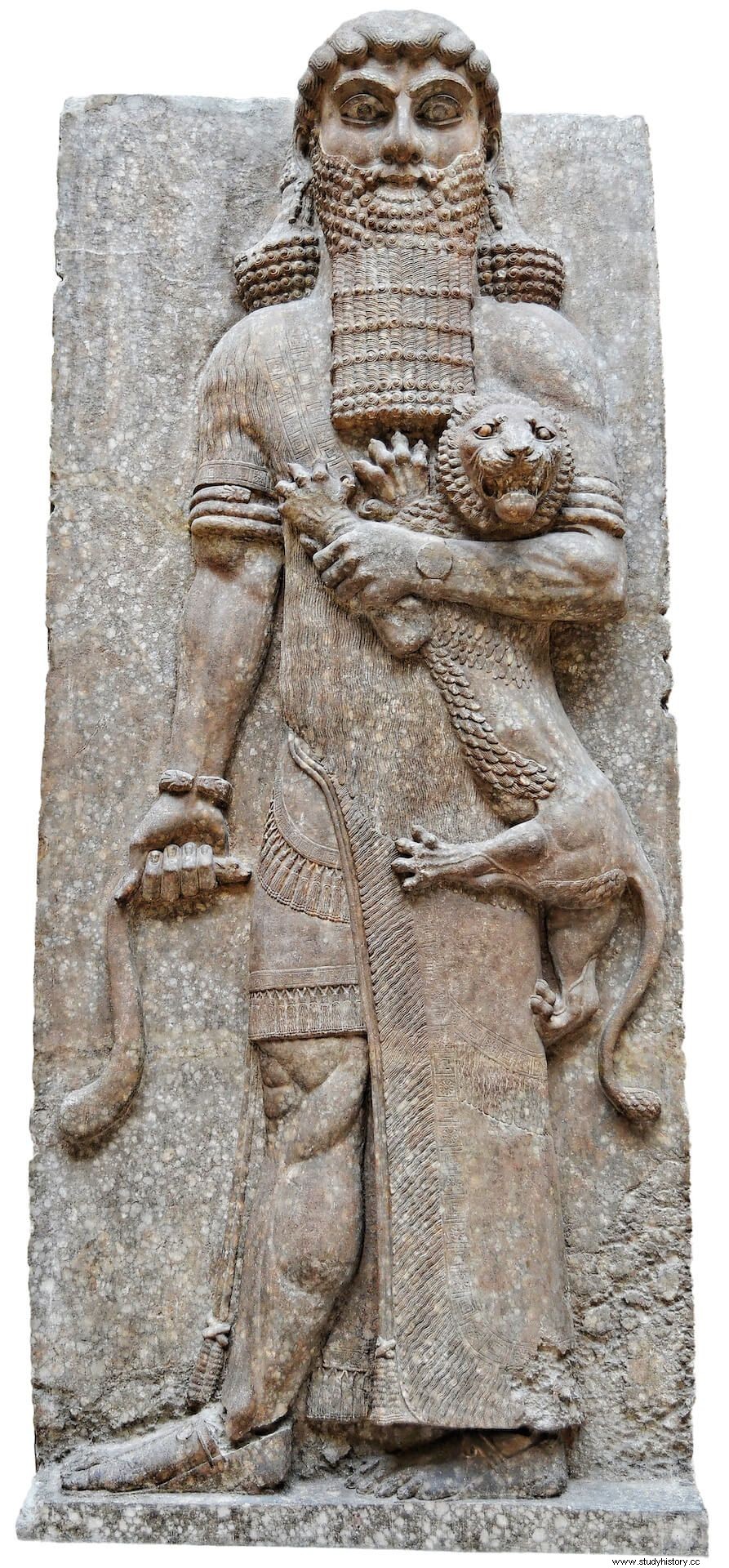
Uruk, one of the most important Sumerian city-states and one of the first settlements that we could qualify as a city, is in particular the place that plays a more relevant role in the hero's story. Gilgamesh is featured in the Epic as the son of the goddess Ninsun and a mortal named Lugalbanda. In it it is clearly mentioned that he was king of Uruk, so his historical existence – as likely as that of King Arthur (see Desperta Ferro Antigua y Medieval #36:King Arthur )–, would fit in the Old Dynastic period, around 2800-2500 BC. C. Among the most earthly and plausible feats of his, far removed from immortalities and underworlds, figure that he was responsible for building his impressive wall:
In any case, Gilgamesh appears in the Sumerian king lists as the fifth ruler of the 1st Dynasty of Uruk , who would have reigned, if this were true, around 2750 BC. C. for a period of time (126 years) as long as improbable. It is not an isolated fact that an epic history of a king was written, and in fact other examples are known, albeit fragmentary, such as those of Sargon of Acad (ca. 2390 BC C.), Zimri-Lim of Mari (ca. 1850 BC C.), Nebuchadnezzar I of Babylon (ca. 1120 BC C.) or Nabopolassar (ca. 620 BC C.) that give good faith of this practice in ancient Mesopotamia. On the other hand, around 2150 a. C. there were already some stories written in Sumerian about the kings of Uruk, including the first copies of a poem dedicated to Gilgamesh. At the time, interest in these narratives overflowed the city itself, and even King Shulgui of Ur (ca. 2150-2103 BC C.) claimed to be the son of Ninsun and therefore the brother of the famous Sumerian hero. Therefore, some six centuries after his supposed real existence, Gilgamesh had already become a legendary character, although his complete history was still far from being articulated in the way we know it.
Out loud (and handwriting)
As it happened with the genesis of the human race itself in the creation myth of the Paleo-Babylonian story of the Flood (Atrahasis V), the story of Gilgamesh was modeled in clay, in this case in the form of hundreds of tablets written with cuneiform signs . There is no place here to insist on the question of the importance of writing as an unequivocal sign of the introduction of the human species in history and as a fundamental support for the understanding of the cultures and societies of the ancient world. The discovery of countless tablets inscribed in cuneiform since the 19th century and their subsequent decipherment has shed so much light on Mesopotamian societies that, otherwise, many aspects related to their behavior would have been impossible to detail in such a specific way, even accepting the many gaps that we still have on countless issues that we would like to know much better. Despite everything, the abundant original finds of cuneiform tablets have been increased by new discoveries of texts, the improvement in the translation and revision of other known ones, or the recovery and publication of private collections. It is well known that the first cuneiform writings correspond to inventories, commercial transactions and the registration of accounts, so that, in the first instance, literature was not part of the initial motivations of the scribes, and would only come later. Cuneiform was used from at least 3200/3000 BC. C. until 100 d. C. to express different languages. Thus, for example, from the second millennium BC. Akkadian-speaking Babylonian scribal apprentices used the stories of the Sumerian Bilgames to practice and learn writing. In their apprenticeship, they had to write by dictation and from memory, and for this they logically had to master a certain number of Sumerian literary compositions, among which were the stories of the hero of Uruk. Based on this fact, it is not uncommon to find incomplete fragments of the Epic , which only contemplate a part of the complete story.
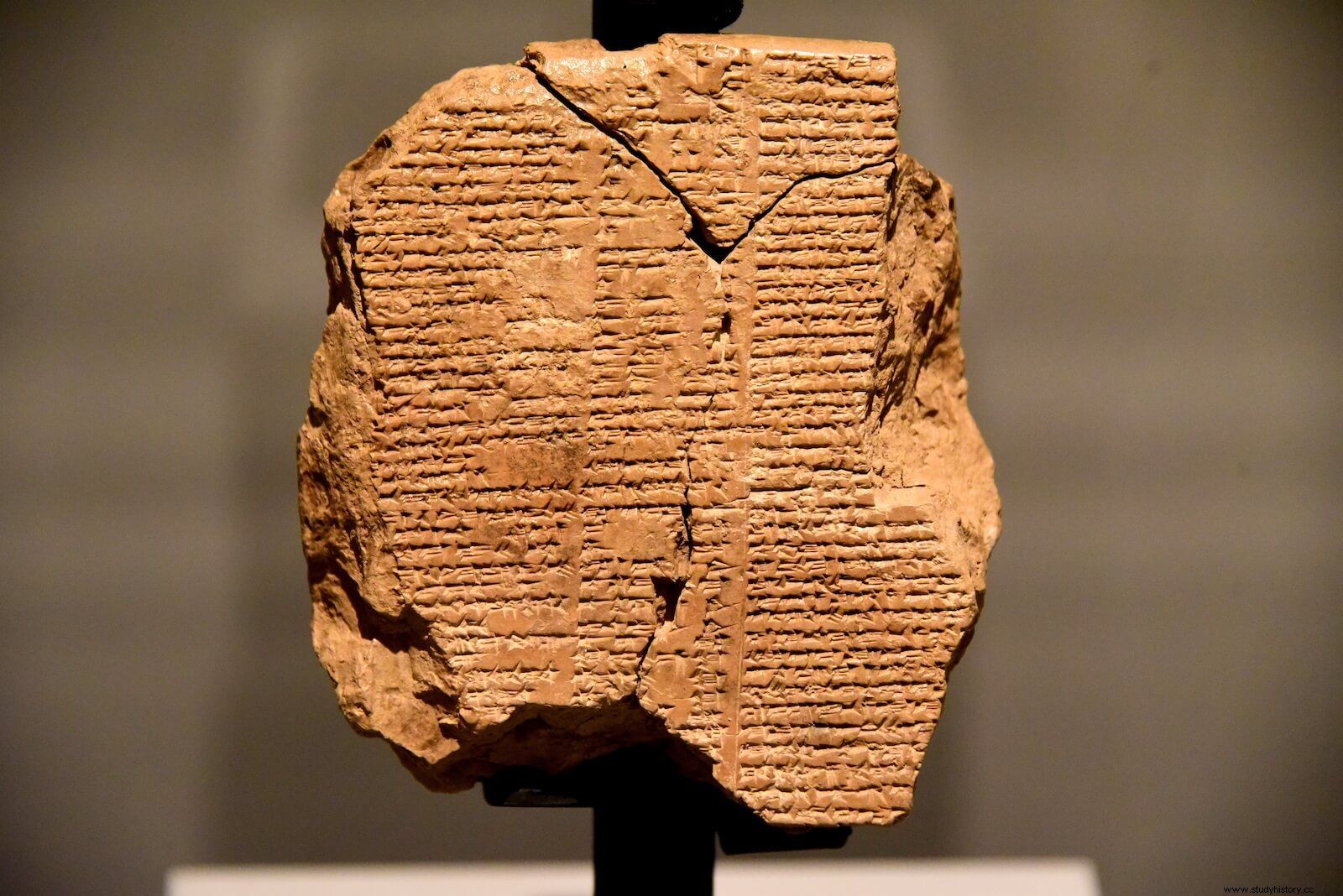
But in the record material related to the Epic of Gilgamesh , the most important discovery undoubtedly occurred in 1850, when Austen Henry Layard and Hormuzd Rassam Nearly one hundred thousand cuneiform tablets dated to the time of Ashurbanipal (668-627 BC) were discovered in the royal libraries of Nineveh, which were taken to the British Museum for further study. Rassam returned three years later and found another remarkable ensemble in the northern palace of the Assyrian king. The magnificent collections unwittingly included the main corpus of tablets that make up the standard version of the Epic , which is today the most popular for being the one that links the different independent ancient stories in a continuous and organized story around the Sumerian hero. When Rassam and Layard made those discoveries, cuneiform was still in the process of being deciphered, but the efforts of several researchers finally bore fruit and in 1872 the British Assyriologist George Smith announced that he had found the famous story of the Flood among the remains of the Gilgamesh tablets, causing a stir in a public opinion still mired in the debate between creationism and evolutionism.
The standard version of the Epic of Gilgamesh It is made up of twelve tablets that are not complete –the fragmentation of the clay is easy and very frequent– and contain a multitude of blank spaces, forming a still partial account that has sometimes been compared to a manuscript gnawed by rats or partially consumed by the fire. More than seventy copies or versions with slight differences are known today, mostly from Nineveh, but later ones from Babylon, Uruk, Ashur, Kalah and Huzirina are also preserved. The gaps can sometimes be filled in with the oldest narratives that have preserved certain parts of the story, but little by little the gaps in the narrative are filled, and in seventy years the material we have has doubled.
However, the remote origin of the Epic of Gilgamesh you have to look for it not in writing but in the oral tradition . Most experts agree that the earliest forms of the stories featuring the intrepid king of Uruk were probably recited orally or sung as hymns by poets, perhaps as early as the court of the 3rd Dynasty kings. of Ur. Therefore, as would happen in the best epic stories that shape the human past and that were sung by Greek rhapsodes, staged by playwrights and actors, or chanted by bards and skalds, the origin of the Epic it was forged in the throats of Sumerian masters at the end of the 3rd millennium BC. C.
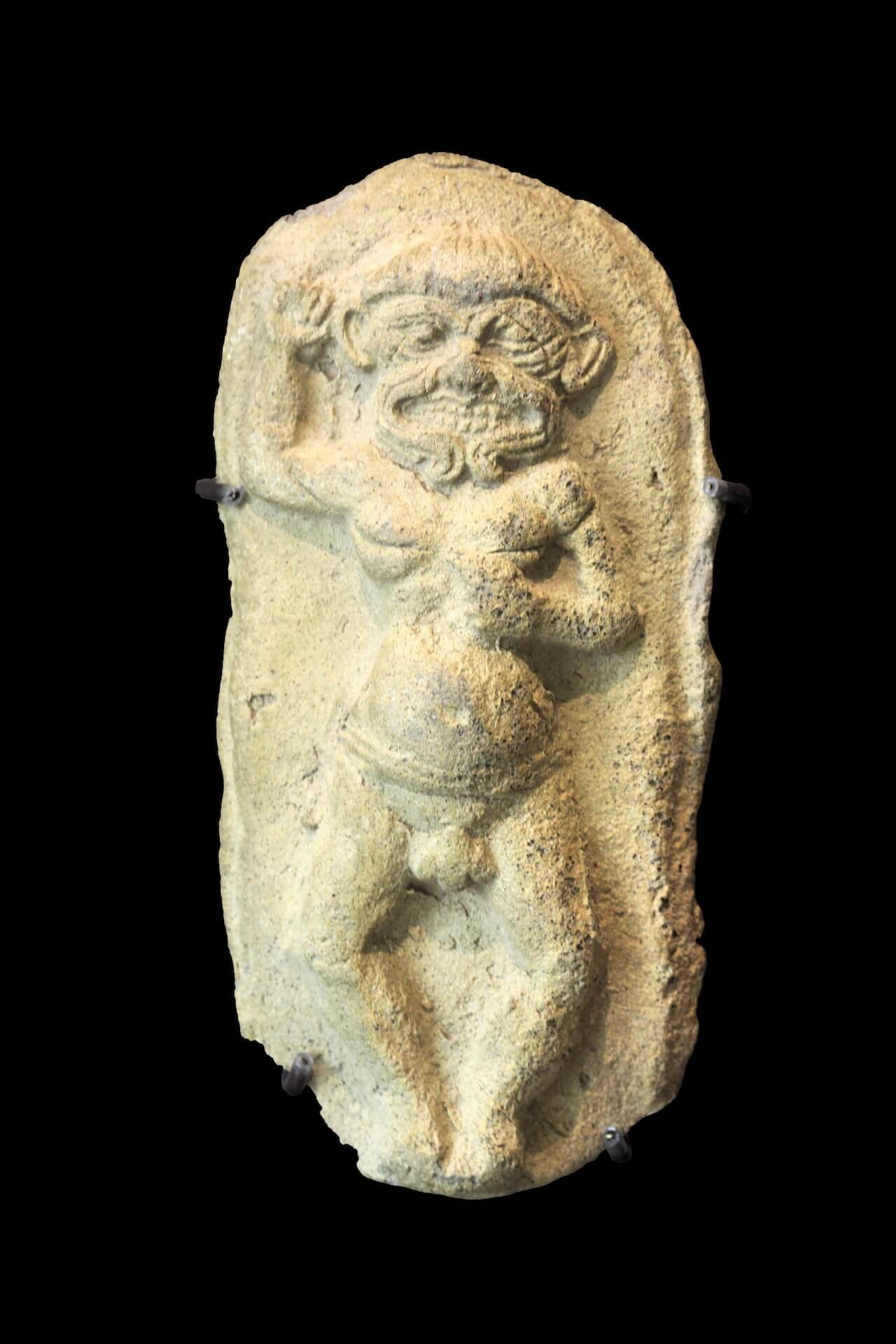
The evolution of a series of independent Sumerian poems, later put in writing, until the epic written in Akkadian of the standard version organized in twelve tablets that constitutes the most complete version, is one of the most complex ways of studying around this work, and in no way can it be thought that the late versions were translations of the oldest, but rather that they were adaptations in many cases changing . Akkadian is a language of Semitic origin that had prevailed in the region towards the end of the third millennium BC. C. as a vehicular language, and although the language of prestige learned by the scribes continued to be Sumerian for some time, the Akkadians would eventually end up using Sumerian cuneiform to express themselves in their own language. In the course of the centuries that have elapsed until the creation of the standard version, in addition to the intervention of other languages and cultures, some changes have logically taken place; things were lost, others were invented, names were changed and the status of some characters was transformed. Thus, for example, in the Sumerian epic, our hero is Bilgames and not Gilgamesh, and his good friend Enkidu is actually a servant of his, to mention just a few of the most striking transformations.
The search
The person responsible for collecting and adapting the old Sumerian stories into a continuous epic story must have been an experienced scribe, although who this sage was in particular is another of the great mysteries that surround this masterful work. The Mesopotamian tradition had its own candidate, and attributed the fixation of a complete narration, called Sha naqba imuru , “He who has seen the Deep” –undoubtedly a name endowed with great meaning and that comes from the phrase that begins the Epic – to a certain Sîn-leqi-unninni, priest, exorcist and scribe from Uruk in the Middle Babylonian period (ca. 1600-1000 BC C.) who perhaps lived between the 13th and 11th centuries BC. Although it is tempting to accept this idea, it is somewhat unlikely, since there are fragments of the first Akkadian Gilgamesh dated to Old Babylonian (ca. 2000-1600 BC C.) –among others, the tablets of Pennsylvania, Yale and Nippur with dates around 1700 a. C.–, although it is also true that these incomplete versions do not have the prologue and perhaps not the story of the Flood, so it cannot be ruled out that the Uruk scholar edited the Paleo-Babylonian text until it was given its definitive form
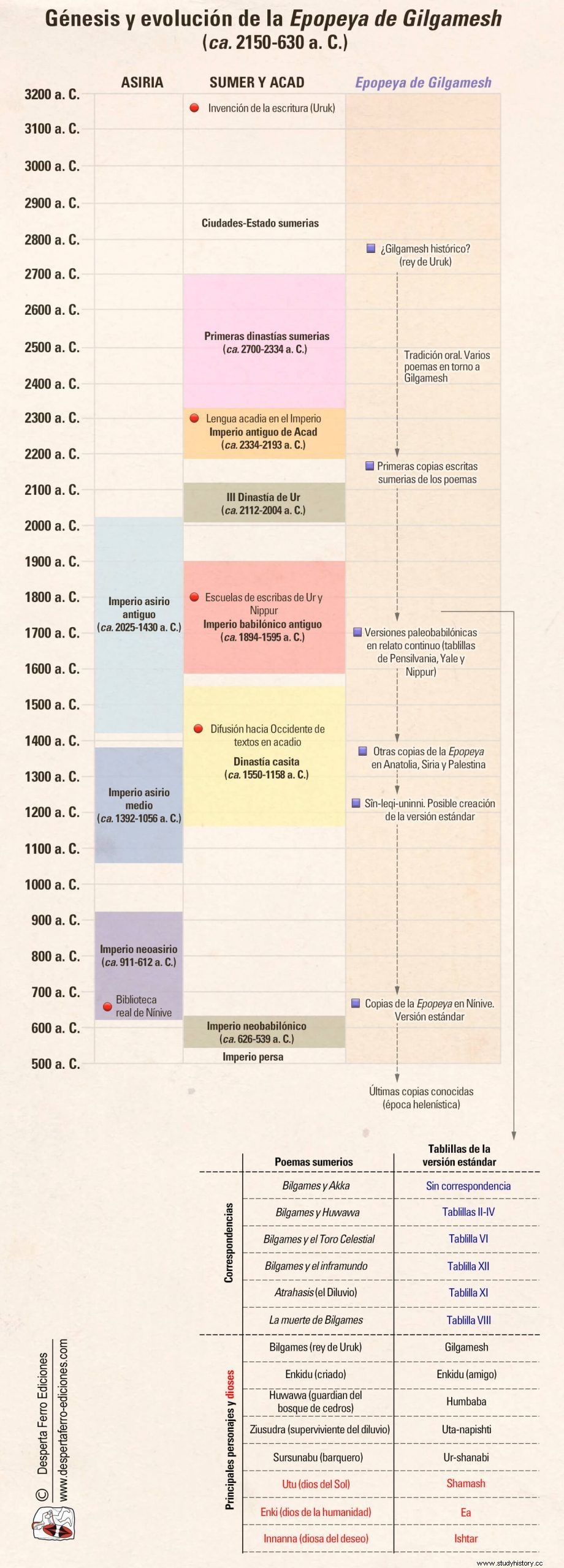
The oldest Sumerian version poems related to the myth are mainly six. One of them, the story of Bilgames and Akka , tells of the threat of the latter -king of Kish- on Uruk and the heroic response of Bilgames, although the story was not continued in the later Akkadian composition. A second poem, Bilgames and Huwawa , constitutes the core of the later story of the cedar forest and the confrontation with its fearsome guardian, which would be integrated into tablets III and IV of the standard version. Another poem, Bilgames and the Heavenly Bull , formed the basis of the action of tablet VI. Undoubtedly one of the most interesting is the poem by Bilgames and the Underworld , which explains how Inanna (the Sumerian correspondent of the goddess Ishtar), found a tree and planted it with the intention of using it to make furniture, but soon some creatures that lived in the tree began to frighten her until Bilgames came and cut it down. Innana used her wood as he saw fit, but Bilgames held back a bit, and with it he made two toys. However, they fell to the Underworld, and the brave Enkidu offered to go look for them despite his master's warnings, only to end up captured there forever, although his shadow managed to return to explain to Bilgames what the afterworld was like. Another poem, the Death of Bilgames , conceives the idea that the gods give the king a position of authority in the Underworld and tells how the king, already convinced of his death, builds his own tomb. A final poem is that of the Flood, Atrahasis , which does not have Bilgames as the protagonist and does not even mention him, but which would later reach great importance in the story of the standard version.
The “ultimate” story would take these poems as a reference and arrange them in a sequence in which the transformation or evolution of the hero would make perfect sense. Properly, we would have to speak of eleven and not twelve tablets for the standard version, since the twelfth was added later – perhaps as late as the seventh century BC. C.–, and it is actually the translation of a part of the poem of Bilgames and the Underworld , which here functions as a kind of appendix or epilogue but was not part of the original standard version.
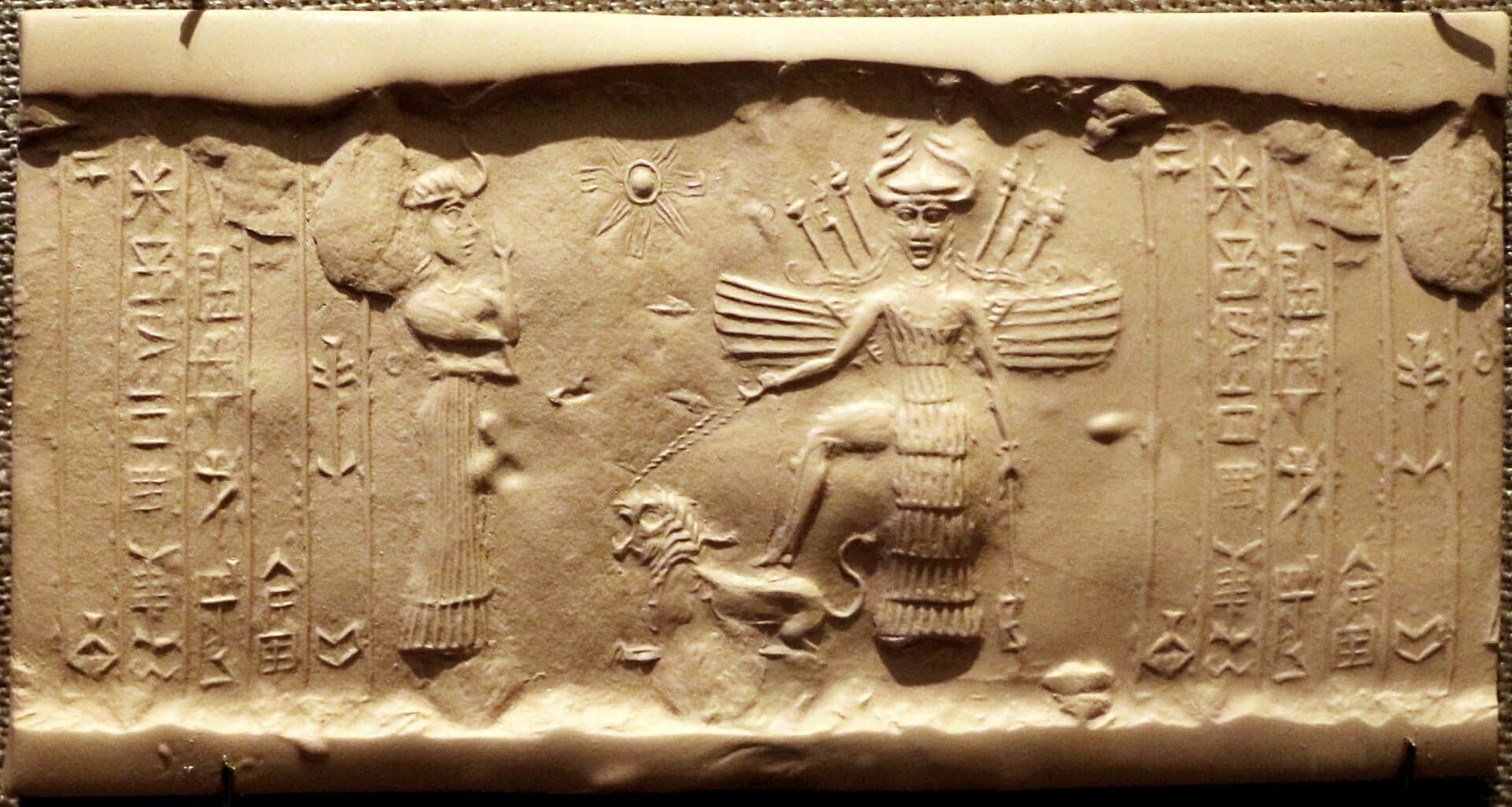
Apart from this detail, the Epic of Gilgamesh brilliantly narrates a journey into the inner world of a complex character that not because he was a king and son of a goddess he ceased to be a victim of human uncertainties and weaknesses. His story generally takes place in the liminal space that separates three well-differentiated areas:nature, embodied by the wild Enkidu and Humbaba, the guardian of the cedar forest; civilization, whose maximum exponent is represented by Gilgamesh himself and the city of Uruk; and the supernatural or divine, which is personified by the gods and the fearsome beings that the hero faces. Enkidu's death in tablet VII, and with it Gilgamesh's realization that he himself will not be able to escape the reaper, acts as a hinge between the two great searches in inhospitable spaces. His second journey, in fact, will end with the acceptance of his fate.
Beyond Mesopotamia
Before being lost in oblivion, the story of Gilgamesh crossed cultural and temporal borders. The echoes of some of his passages in the Bible are well known, particularly as regards the Deluge episode , the famous poem Atrahasis, which has an almost identical parallel in Genesis (5-8), although this logically contains details of its own, such as the fact that in the Noah passage it is the dove that returns and not the raven that sends Uta-napishti the that he does not do it because he finds food, and that in this case he brings back a green olive branch, a tree that does not grow in Mesopotamia and that indicates that the narration has been adapted to the Palestinian geography. In other passages of Genesis many other analogies are found, such as the fact that Enkidu was created by the goddess Aruru with clay, as Adam would be by Yahweh according to Genesis, II.7. Apart from that of Gilgamesh, other stories from the epics of the Mesopotamian kings also had their particular resonance in the architecture of the biblical stories, as for example in the case of the famous King Sargon of Akkad, who, according to legend, was a foundling and was delivered to the river in a basket of reeds, just as Moses would later do.
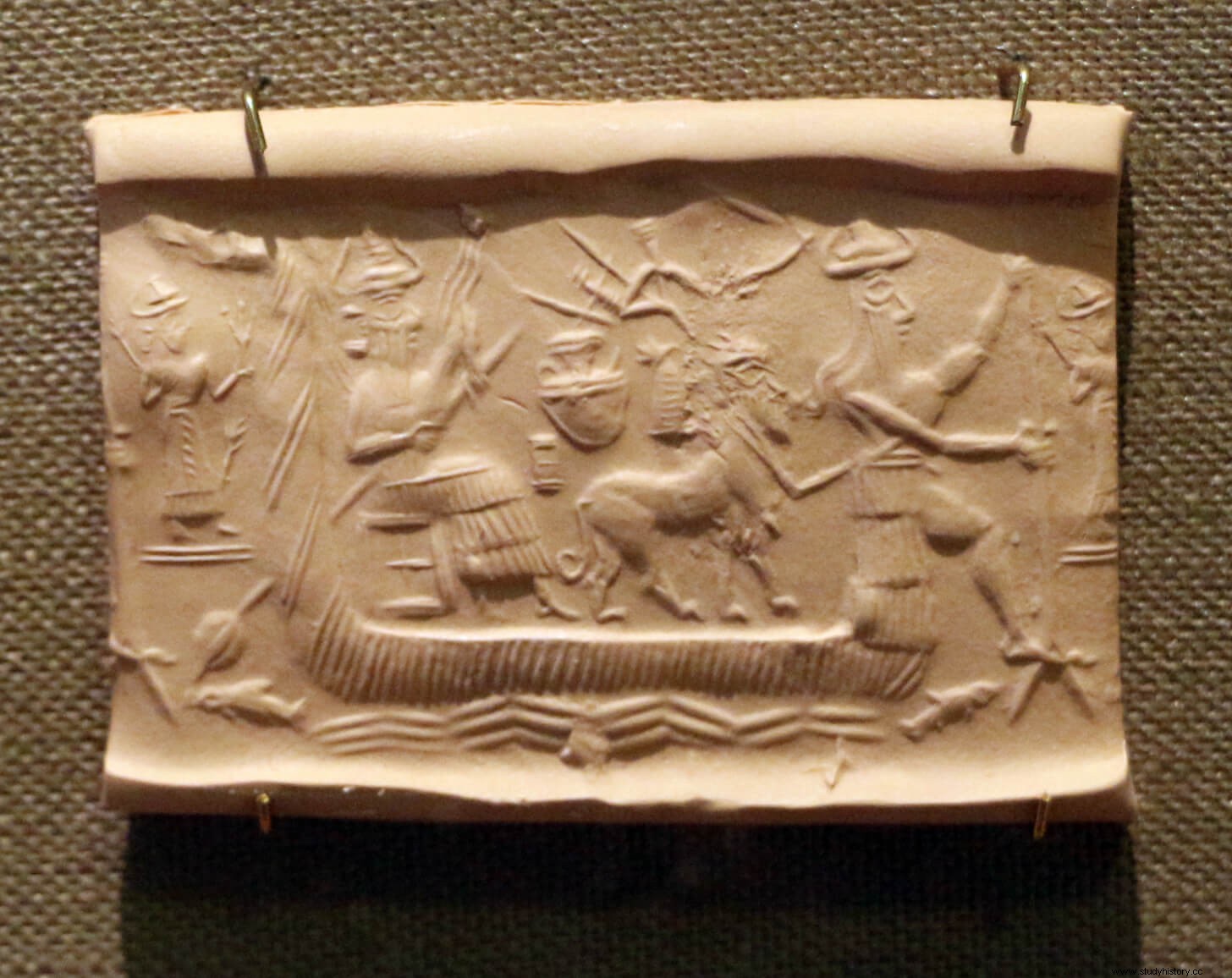
Although there is no record of the translation or adaptation from the epic to Greek or Latin and yes to other languages such as Hittite or Hurrian, the Greek oral tradition he must also have soaked up an epic story as popular as this one. Without going into the analogies between Gilgamesh and Heracles (both fighters, wanderers, dressed in a lion's skin and semi-divine), many authors have insisted on the similarities between the structure and some passages of the Epic of Gilgamesh and the Odyssey . It is very possible that the story circulated throughout the geography of the Levant and Homer borrowed certain details, such as the encounter between Odysseus and Calypso (Odyssey V) which is very similar to that of Gilgamesh with Siduri. The story of Gilgamesh may well have reached Greece after the Assyrian conquests of Syria and Phoenicia in the 9th century BC. C. (see Desperta Ferro Antigua y Medieval #10:The Assyrian Empire ) or perhaps from the Hittite tradition, since an autochthonous copy of the Epic is known Dated to the second half of the 14th century BC. C.
Further still, other later spheres of influence can be seen that cross cultural borders. Scholars have pointed to the existence of literary borrowings from Gilgamesh even in the Arabian Nights –whose stories draw from the pre-Islamic Persian tradition–, mainly in the History of Buluqiya . Likewise, the analogies have also been seen in the Germanic epic, in the poem of Beowulf , perhaps because some topics of the epic itself tend to repeat the same schemes and highlight aspects such as the confrontation with death, companionship and the fight against supernatural monsters that threaten the status quo .
Death knocks at the door
Despite his semi-divine character, Gilgamesh did not enjoy the benefit of immortality. His story is a finite story, and not an imperishable journey. The hero of Uruk did not want to flee from death, but to defeat it , and the path he took was through wisdom; a wisdom that only a character as long-lived as Uta-napishti could hold, the only survivor of the great flood sent by the gods, immortal by their grace and therefore the living personification of knowledge that accumulates layer by layer over the years. . To reach him, Gilgamesh had to pass a priori tests. insurmountable, and when the long-awaited encounter occurred, the wise man warned him of the futility of his objective:
Gilgamesh was afraid of leaving empty-handed, but Uta-napishti told him of the remote possibility of finding a strange and dangerous aquatic plant hidden at the bottom of the ocean that had the property of rejuvenate whoever consumes it. As expected, Gilgamesh achieved his goal and obtained said plant, but surprisingly, as soon as he relaxed and wanted to bathe in a pond, a snake smelled the plant and snatched it from him. With that unpredictable gesture, eternity slipped from the hands of the Sumerian hero, and his journey in pursuit of immortality thus became an encounter with himself.
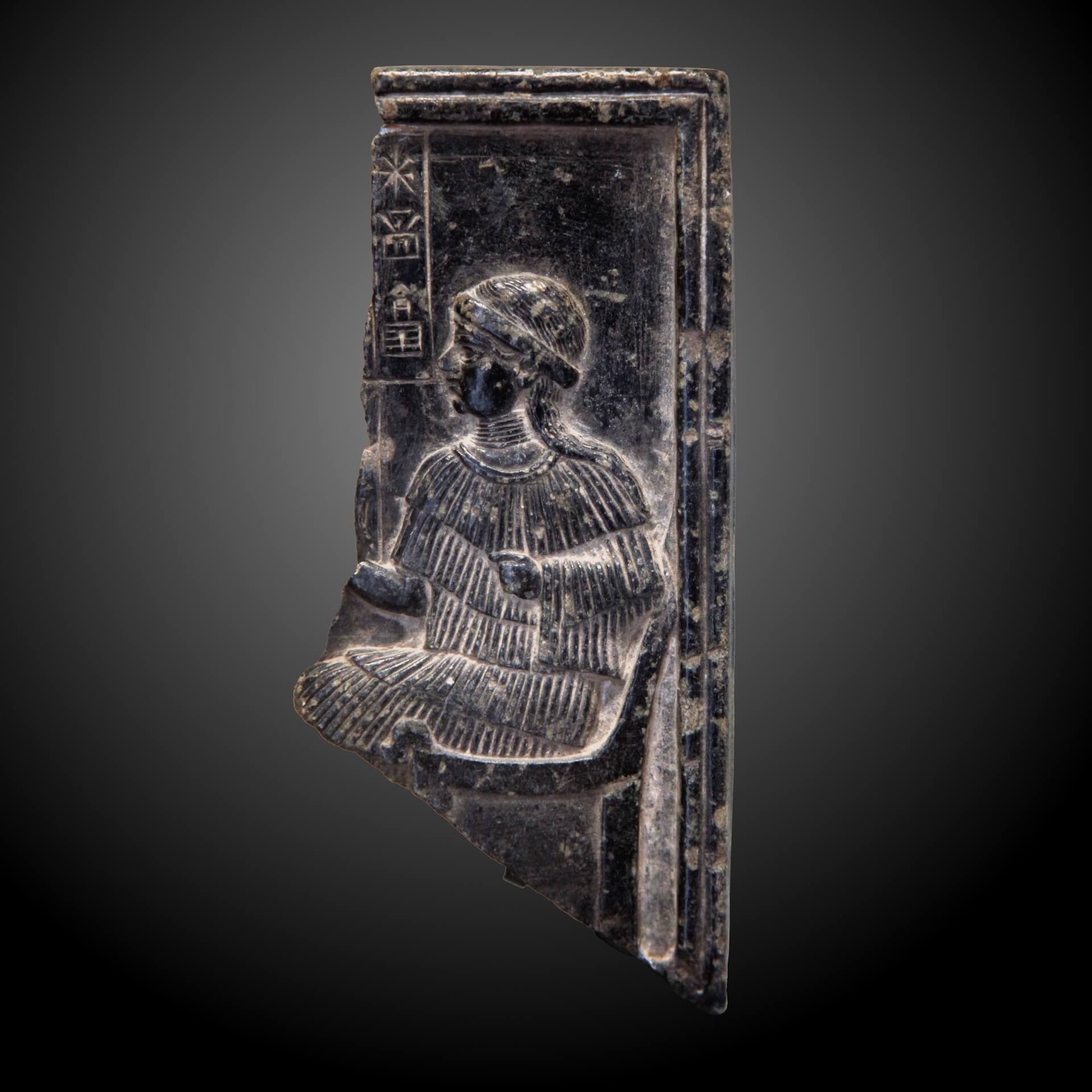
However, that encounter, unknowingly, already was going on almost from the beginning of the Epic , in his exploits with fellow Enkidu, who introduced him to the path of friendship, loyalty, and piety. Indeed, the Epic talks about human attitudes towards death , of despair at the transience of life, but above all of a transcendent journey. For fear of death, Gilgamesh undertook the path of knowledge, but his journey was long:he began as a despotic character –“by day and by night his tyranny became more severe” (I.69-70)–, he went through a reckless attitude, bordering on death, in his search for eternal fame – another form of immortality – and when his dear friend Enkidu died, he knew nothing but to wander to the ends of the world. When he returned to Uruk, he did so completely transformed, as a man and not as a god, and as a wise king rather than a capricious tyrant:
The existence of the hero was hidden for millennia, buried in fragments of cuneiform clay tablets, fortunately more durable than those written on other perishable media. Gilgamesh, "the tall, magnificent and terrible, who opened passes in the mountains, dug wells on the slopes of the highlands and crossed the ocean, the wide sea until dawn" (I.36-40), managed to be reborn after a long lethargy and, paradoxically, by accepting his death he became immortal. The reading of the epic evokes the limitations and capacities of humanity, but also the path of wisdom. The fact that death knocks at our door does not mean that we cannot dream of immortality. In this way, not even death can with us.
Bibliography
- The Epic of Gilgamesh (2004; version by A. George, trans. F. Chueca). Barcelona:Penguin Random House.
- Dalley, S. (2008) (ed.):Myths from Mesopotamia. Creation, the Flood, Gilgamesh and Others . Oxford:Oxford University Press.
- Feldt, L.; Koch, S. (2011):“A life’s journey. Reflections on death in the Gilgamesh epic”, in Barjamovic, G.; Dahl, J.L.; Koch, S.; Sommerfeld, W.; Westenholz, J.G. (eds.):Akkade is king . Leiden, pp.111-126.
- North, R.; Worthington, M. (2012):“Gilgamesh and Beowulf. Foundations of a comparison”, Kaskal , 9, p. 177-217.
- Riley, J. M. (2013):“‘Love the child who holds you by the hand’. Intertextuality in the Odyssey and the Epic of Gilgamesh ”, Studia Antiqua , 12.2, p. 1-12.
